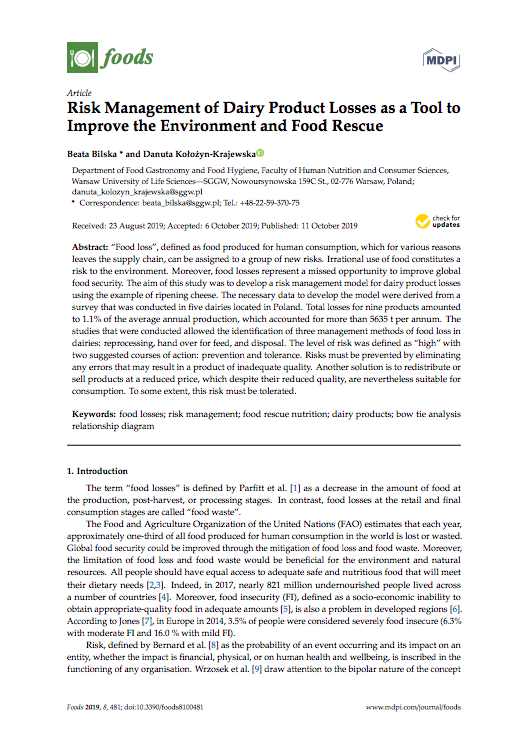Risk Management of Dairy Product Losses as a Tool to Improve the Environment and Food Rescue

ABSTRACT
“Food loss”, defined as food produced for human consumption, which for various reasons leaves the supply chain, can be assigned to a group of new risks. Irrational use of food constitutes a risk to the environment. Moreover, food losses represent a missed opportunity to improve global food security. The aim of this study was to develop a risk management model for dairy product losses using the example of ripening cheese. The necessary data to develop the model were derived from a survey that was conducted in five dairies located in Poland. Total losses for nine products amounted to 1.1% of the average annual production, which accounted for more than 5635 t per annum. The studies that were conducted allowed the identification of three management methods of food loss in dairies: reprocessing, hand over for feed, and disposal. The level of risk was defined as “high” with two suggested courses of action: prevention and tolerance. Risks must be prevented by eliminating any errors that may result in a product of inadequate quality. Another solution is to redistribute or sell products at a reduced price, which despite their reduced quality, are nevertheless suitable for consumption. To some extent, this risk must be tolerated.